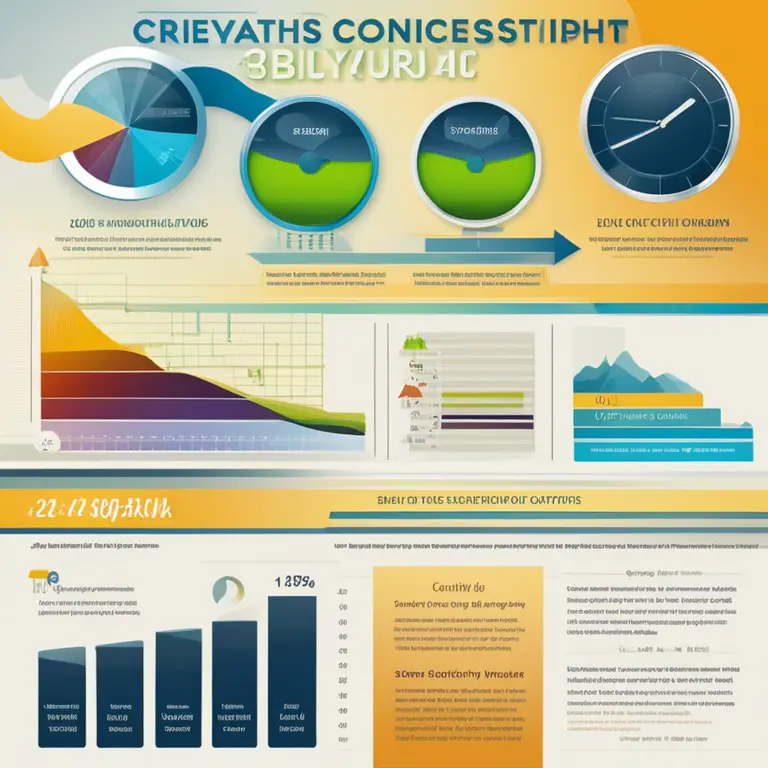
The Rhythms Within: An Insight into Biorhythms
Discover the science and philosophy behind biorhythms, the cyclical patterns our bodies follow, in connection with our physical, emotional, and intellectual states.
article by Adrian Wallace
Defining Biorhythms
Biorhythms are intrinsic cycles that govern various aspects of our physiological and psychological well-being. The concept emanated from the early 20th century, suggesting that our lives are influenced by rhythmic biological cycles. While seen as pseudoscience by many, others embrace biorhythms for personal insight. In modern wellness practices, biorhythms are considered alongside traditional healthcare to support individualized treatment plans, with the burgeoning field of chronobiology lending scientific credence to the importance of biological rhythms in health and disease management.

The Three Core Cycles
The theory of biorhythms primarily revolves around three core cycles: Physical, Emotional, and Intellectual. Each cycle has a different duration; the Physical lasts for 23 days, the Emotional is 28 days, aligning with the lunar month, and the Intellectual spans 33 days. These cycles are thought to influence our stamina, mood, and cognitive functions, respectively. Advocates of biorhythmic analysis claim that by mapping and understanding these cycles, individuals can anticipate their peak days of performance or caution against periods of potential vulnerability.

The Science and Skepticism
Though the exact mechanisms by which biorhythms might operate remain undetermined by empirical research, the idea aligns with observable patterns such as circadian rhythms, which dictate our sleep-wake patterns and have been extensively researched. On the other hand, skepticism persists, largely due to the lack of rigorous scientific validation and reproducible evidence. Nevertheless, the intersection of technology and wellness has seen the emergence of apps and software designed to track personal biorhythms, suggesting a continued interest in the potential utility of these cycles.

Applying Biorhythms in Daily Life
Those who consider biorhythms a useful tool recommend their integration into daily life for better personal and professional outcomes. From determining the best dates for important meetings and events to understanding potential mood swings, biorhythmic calculations might play a role in planning and decision-making. It is posited that being aligned with one's biorhythms can enhance productivity, bolster emotional resilience, and sharpen intellectual abilities by harnessing natural ebb and flow.

Critiques and Considerations
Despite keen interest from parts of the public, the scientific community largely regards biorhythms-related practices with caution. A common critique is that any benefits experienced may be attributed to the placebo effect or confirmation bias rather than the purported cycles. Caution should be exercised, especially when decisions based on biorhythmic predictions could substantially affect one's well-being or financial situation. Nonetheless, the potential for subjective value may exist for individuals who resonate with cyclical patterns of experience.
The Future of Biorhythmic Research
As interdisciplinary fields continue to burgeon, the study of biorhythms could intersect with different scientific realms, potentially illuminating undiscovered aspects of human biology. Advances in bioinformatics and a deeper understanding of genomics may provide future frameworks for assessing the validity and relevance of biorhythms. Whether future science will fully embrace, debunk, or redefine the concept of biorhythms remains to be seen, but for now, it continues to be a topic of both curiosity and controversy.
Published: 1/25/2024
Modified: 1/25/2024
More predictions
Come back here soon to learn more about yourself and your future


The Basis of Biorhythms: An Insight into Biological Cycles
Delve into the concept of biorhythms, the belief in rhythmic biological processes that purportedly influence human physiology and behavior.


Biorhythm Love Compatibility: Find Your Match
Discover how a biorhythm love compatibility calculator can enhance your romantic connections by analyzing the natural cycles that influence relationships.


The Intersection of Biorhythms & Astrology Explored
Discover the link between biorhythms and astrology to gain insights into your life's patterns and potential.